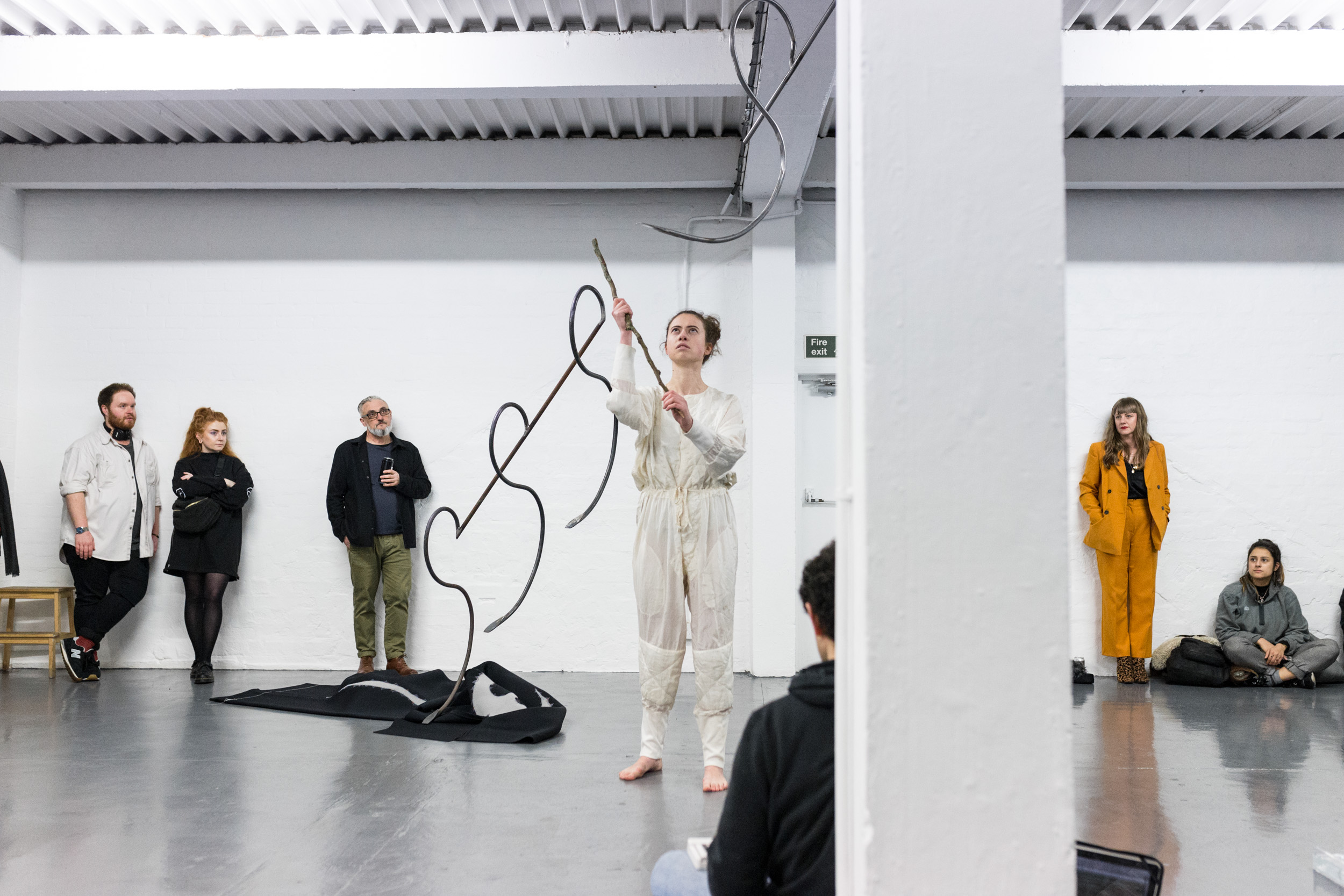This year Grand Union celebrates fifteen years of artist-led activity in Digbeth, the rapidly developing district close to Birmingham city centre. In that time the gallery and artists’ studio complex has secured a reputation as a place to experience the best in experimental and socially relevant arts programming. Their events and exhibitions have become a prominent and important facet of the arts ecosystem in the region, and the organisation has demonstrated how the right timing, careful consideration of place and its complex histories, alongside a significant amount of graft, can secure space within major city-wide development; not just for the activities of artists, but for the nurturing of a whole series of meaningful relationships and entanglements.
It is June 2025 and I am visiting Minerva Works (the organisation’s home since 2010) to meet with Director and founder Cheryl Jones ahead of a big announcement. Grand Union have secured a long-term lease on neighbouring Junction Works: a Grade II listed grey-bricked building built in the 1850s to house Birmingham’s Canal Offices; standing largely empty since a fire in 2004. Stage One of their relocation plan, completed in 2022, saw offices created at the front of the building (rented out to generate income for the project), and now the next phase sees a 150-year lease secured to develop the rest of this iconic site into a sustainable creative and cultural home in the middle of what has become the Digbeth regeneration machine.
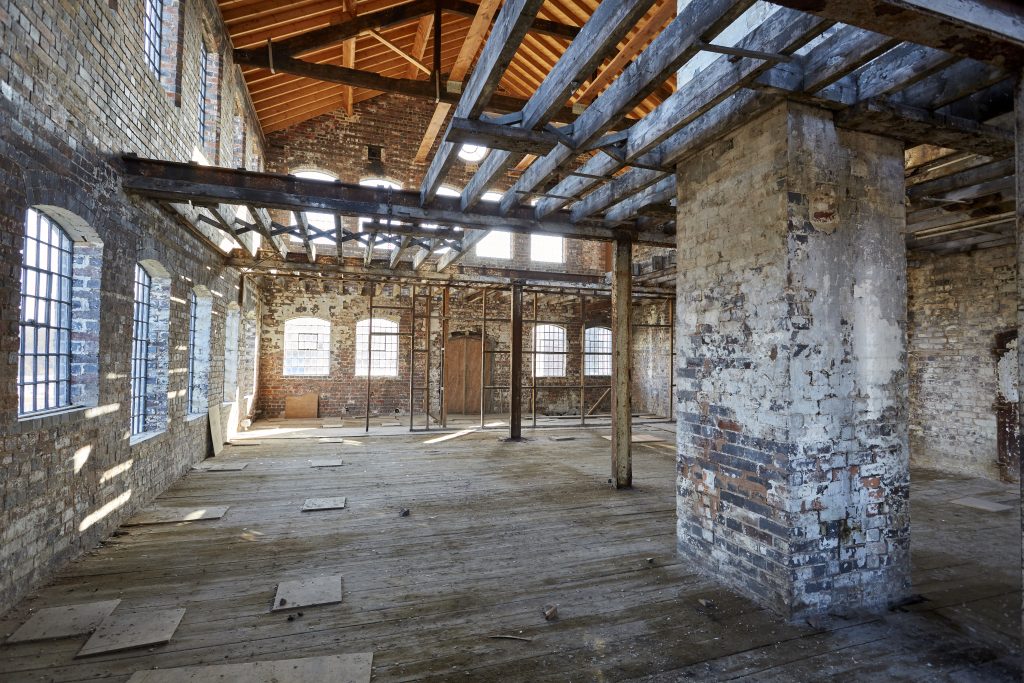
Cheryl talks through the different uses and plans for what is to come: a larger gallery enabling bigger, more ambitious and varied exhibition programming; permanent studios for artists to meet and make work, with scalable rents and tenures to ensure that they are genuinely functional and affordable. Also wrapped into the plans will be a community garden, a flexible outdoor spill-out space and cafe with non-traditional employment opportunities for local people, and consideration for how to nurture social enterprise.
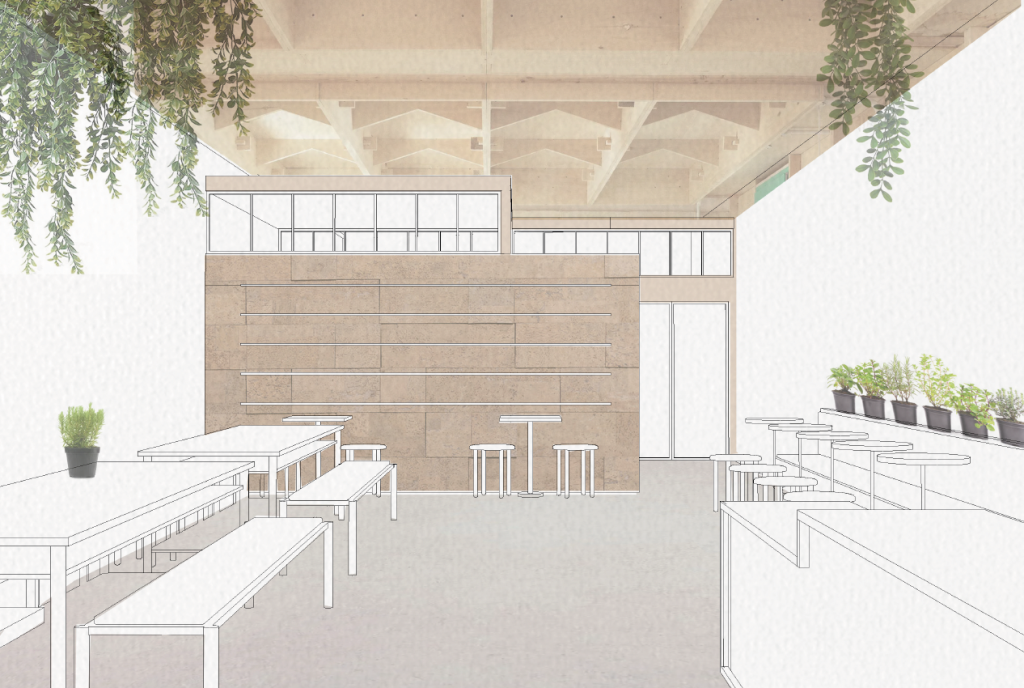
The proximity to what will be HS2’s Curzon Street Station, just four-minutes-walk away from the Junction Works building, is significant. The speed of change in Digbeth has accelerated considerably around this new transport infrastructure after what felt like more than a decade of stasis. Television production studios are also rapidly relocating to the area (now dubbed ‘Brummiewood’), and the BBC is establishing its new headquarters at the former Typhoo Tea building nearby.
Stories like this usually see the visual arts displaced, and artists could be forgiven for eyeing these new neighbours with suspicion. Is this starting to sound like the usual tale of artists as the forerunners to a wider regeneration that eventually sees us pushed out? Instead, Grand Union looks with curiosity towards potential collaboration with these new neighbours, believing and trusting in the absolute legitimacy of the value and impact that artists bring to place-based development. An example of this approach is already in motion. Ahead of the launch of the BBC’s new regional offices (scheduled to open in 2027), Grand Union are working with property developer Stoford on a series of commissioned artworks. Turner prize winning artist Jasleen Kaur’s permanent work for Typhoo Square – a new community space for Digbeth at the centre of the development – will draw on the many difficult histories of exchange wrapped into the site. As Kaur says: ‘It’s a huge responsibility to make something permanent for Digbeth at a time when most things in the area feel unstable. My hope is for an artwork to hold some of this complexity that’s being navigated by Grand Union and its communities.’
Cheryl’s determination to secure a place for the artistic, but also wider community in what could be an alienating landscape is impressive, authentic and contagious and what cannot be overlooked is the immense amount of work it will have taken to advocate for artists within this context. We first met in 2010. In the early days we would often be presenting together at conferences and panel discussions about artist-led activity in the Midlands. I would be sharing our work at AirSpace Gallery: an artist-led gallery and studios in Stoke-on-Trent opened in 2006, where I was a Director and studio artist until we had to vacate the building in January this year, due to it becoming unsafe. Discussions would centre around the precarious nature of the spaces we occupy, how to negotiate for longer leases and secure space for artists to work. We would talk about what we as artist-led organisations could do to be more resilient against a backdrop of shrinking sector resources. That common purpose and experience are something we have shared for fifteen years, even though our places, programmes and the eventual outcomes of our artist-led projects are significantly different.
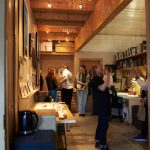
Thinking back to those early days, there was a great sense of positivity across the country, with burgeoning spaces of artist-led possibility opening up nationally. Much of what was being achieved (often) on a shoestring was made possible due to the ‘sweat equity’ of artist organisers pushing things on. So much good work came out of that time, which fed into the wider art sector, but in many cases this has not led to a more permanent or secure position for artists, and a lot of those projects have since closed. I was impressed at the time by the foresight of the Grand Union team; having taken on the Minerva Works site, they built freestanding and modular artist studio units within their warehouse space, making them easier to individually heat, but also designed for quick deconstruction to be moved elsewhere, should the need arise. This attention to creating internal supportive structures resonates with all that I hear about Junction Works during my visit. Establishing a strong core has and always will be a vital ingredient of the Grand Union story.
Behind the Minerva Works building, beside the canal, is artist Alberta Whittle’s ‘The Bothy’ (2022). It’s a peaceful spot with an apothecary garden and colourful wooden shed designed and kitted out by Whittle, MJM Bespoke and local women as a space for dreaming up the future. Each of these women now have the key-code to the shed, so they can go there to take shelter whenever they want, whenever they need to. Alongside herbs, artworks and comfortable chairs, there is a bed here too; for dreaming needs a place to lie down. This small detail speaks of the trust, belonging, ownership and belief in people that are central values of the work. I’m handed a sachet of tea designed and made by the Minerva Garden Group who meet weekly at this permanent outdoor installation conceived as part of Grand Union’s ‘Growing Project‘: ‘a transformative community programme using art making, gardening, cooking and simply being together as a way of offering support and friendship to people passing through difficult times.’ The simple act of making and sharing tea (just one of the group’s many outputs) provides a grounding to the way that Grand Union are creating space to come together within Digbeth’s knotty histories. The work recognises that in this largely industrial part of the city, toxic working practices and damaging industrial processes have left a mark on the landscape and the people and there is work to be done to acknowledge that long and challenging history, and then to imagine alternatives together with the communities here.
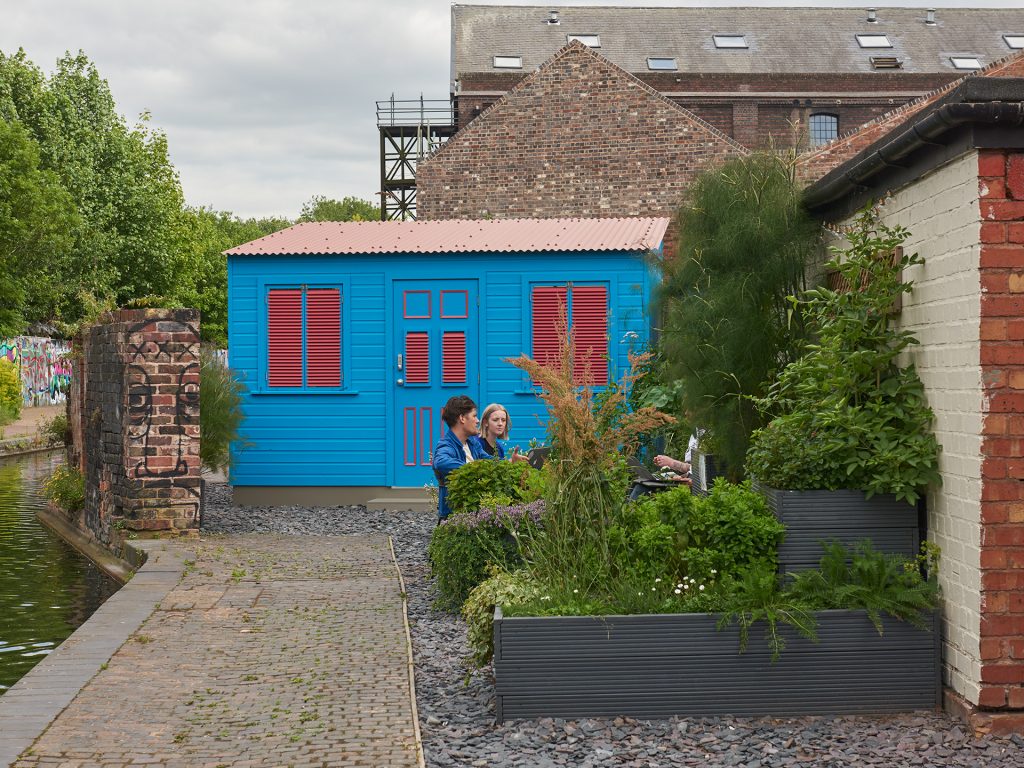
Grand Union is not the only Birmingham-based organisation interrupting the displacement and loss of community in light of gentrification. Demonstrations of resistance and alternative future building can be seen further along Birmingham’s canal system at the Port Loop housing development in Ladywood, where Community Interest Company Civic Square has embarked upon a neighbourhood-scale transformation that is as inspiring as it is ambitious. By co-creating a public square as a space to meet, learn about and deliver the climate transition needed, they are doing the work in a way that is open, collaborative and which can act as a demonstrator for other communities to learn alongside them. The team at Civic Square are bringing what may sound radical, perhaps even impossible, into existence. Supporting their neighbourhood and neighbourhoods like it, to meet the global challenges we face together. Friction Arts too, just a fourteen-minute-walk from Grand Union on the other side of Digbeth, have transformed a former boiled sweets factory into a creative community hub for learning and accessing the arts. A recent capital development project has seen their building renovated to become accessible and environmentally sustainable, in order that it is a building fit for our changing climate and one which will also sustain the surrounding communities for years to come.
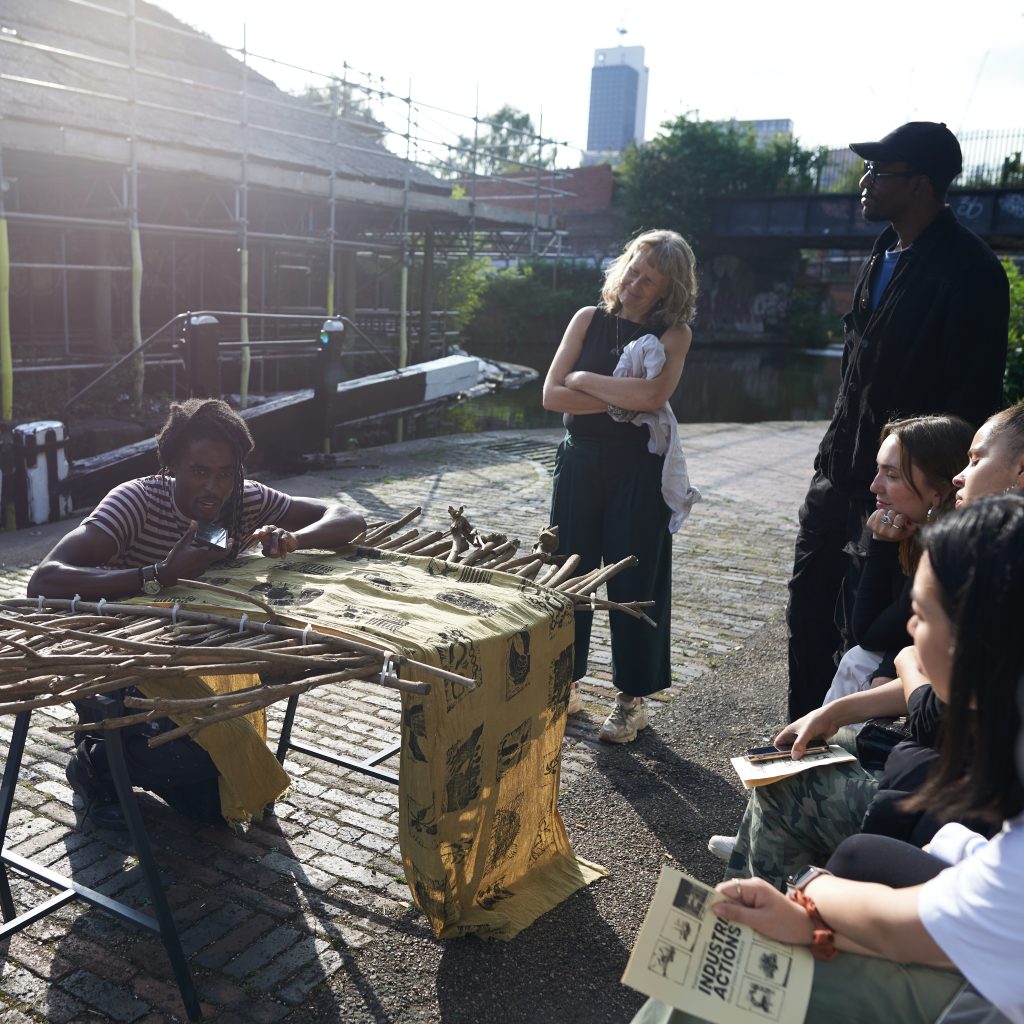
What Grand Union, Civic Square and Friction Arts are all managing to do is demonstrate the value of artist and community focused organisations in supporting the people of a place to have a stake in its development, through deep-rooted, alternatively imagined, future building. In Grand Union’s case, what is particularly impressive is the way that they have done this without compromising on artistic integrity. They are delivering embedded programmes which nurture community development with a wholly recognisable and appropriate Grand Union flavour.
It can be difficult to advocate for space for artists in the developing city, particularly in a place like Birmingham where public facilities are in crisis. Cheryl however, makes the case strongly during my visit: ‘We’re aiming to create a permeable, welcoming place where people can come together to experience and be part of artistic practice. I don’t want to live somewhere where independent artistic culture doesn’t exist. I really believe in the value that art and artists bring to a city and so feel a responsibility to play an active role in creating and sustaining the infrastructure needed.’
*Grand Union have requested that Cheryl Jones be referred to by her first name in this text.
Anna Francis is an artist and researcher based in Stoke-on-Trent.
This feature is supported by Grand Union. It is the first in a trilogy of commissioned texts exploring their relationship to people and place during their 15th birthday year.
Published 19.08.2025 by Kevin Hunt in Features
1,718 words
